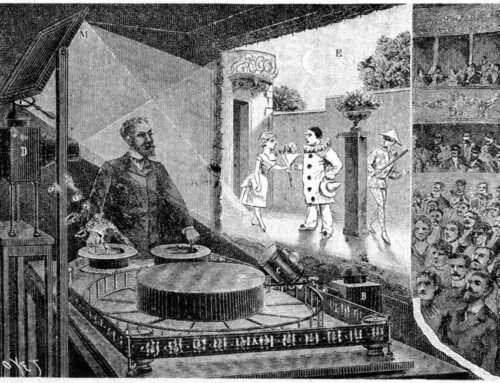On March 23rd, Microsoft launched a smart chat bot called “Tay.” This socially savvy personality served as an online profile that communicated with people via Twitter, Kik and GroupMe. It was supposed to talk like a millennial teenage girl, and was very much the latest push for innovation in Artificial Intelligence (or A.I.) by their team.
Tay is programmed to learn new language by its interactions and conversations with humans. In less than 24 hours after the program was launched, Tay began to share some very racist, genocidal and misogynistic messages to users:

And while nothing is funny about the victims of racism and sexism, one can’t help but laugh at the absolute derailment of Microsoft’s desire to innovate in the field of artificial intelligence in a public setting like the internet. It might have shocked the average person to see Tay transform into a state of negativity so quickly. However, what was NOT surprising was to see the reaction and surprise of humans by this turn of events. Being a professional magician, I know that conjurors are some of the original pioneers of A.I.
A.I., Magicians, and Automatons
 While many of our modern-day technology coding wizards get much of the credit with artificial intelligence, the concept of building a machine to “think” on its own goes back thousands of years. And even though most modern definitions include certain status requirements of “intelligence”, A.I. at its core can be defined as a machine that can perform functions without the aid of humans making directive functions for them.
While many of our modern-day technology coding wizards get much of the credit with artificial intelligence, the concept of building a machine to “think” on its own goes back thousands of years. And even though most modern definitions include certain status requirements of “intelligence”, A.I. at its core can be defined as a machine that can perform functions without the aid of humans making directive functions for them.
This function is very, very old, as seen throughout the history of Automatons. An Automaton is a mechanical device that can “think” on its own. These mechanical devices are created to automate functions, and sometimes have the appearance of operating on their own free will by casual observers. Some of the earliest known references of automatons were recorded by the Ancient Greeks.
However, an automaton in the hands of a magician not only enhances the status of what an automaton can do, but also creates the illusion of Artificial Intelligence as a real, “thinking and conscious machine” during a show. Magicians who pioneered automatons created the illusion that the machines had a will of their own; they could act upon their own desires, listen to commands from humans, and sometimes even possess the human mind in a demonic fashion.
Magicians do this for one, single purpose: because it is creepy and mysterious for people to watch. But for the first time in the history of Automatons, this creepy illusion is suddenly becoming a reality. Before we get to that, let’s look at a brief history of notable magicians and their automatons.
The Turk, A Chess Playing A.I., 1769
One of the very first, public displays of A.I. as a magic trick was with the world-famous, automaton chess player called, The Turk. This “machine” was capable of beating the best chess players in the world. It did not use electricity, and it was also invented just a few short years after Benjamin Franklin’s infamous key experiment. For an audience in that day and age, there was no concept in their minds that electricity existed, or that it could be used to move objects in the first place. As seen in Steve Cohen’s Lost Magic Decoded on the History Channel, this illusion is both eerie and mind boggling:
A.I. with Robert Houdin’s Antonio Diavolo, 1849
The father of Modern Conjuring, Jean Eugène Robert-Houdin (stage name: Robert Houdin), also pioneered A.I. as a display of magic. Houdin was a master watchmaker and transferred his knowledge of his crafts into creating an automaton doll, which performed trapeze gymnastics. The automaton, named Antonio Diavolo, would flip on the trapeze bar as he saw fit, or as requested by Houdin, or sometimes even by audience members.
As recreated and portrayed in this video by Ricky Jay (magic historian, and legendary performer), this classic illusion of Robert Houdin’s is still mesmerizing to watch.
Derren Brown’s Svengali, 2012
Fast forward 150 years to the most recent, wide-spread presentation of an automaton in a theater. This performance was in Derren Brown’s Svengali, in which a possessed life-size doll takes over the body and mind of a random audience member. Brown’s performance with this machine was masterful. Blending magic, mind reading, and hypnosis, he created the most conscious and demonic version of this illusion yet. And, the fear produced through this act is most on par with the most recent fears of machinery going rogue:
A.I. Fears Coming True
The mystifying effect of a machine coming to life was only the beginning. When man realized that our automatons and computers could one-day think for themselves, we also realized they could out-think their human creators (us). Only then did the public realize there is something to worry about.
The magic of bringing a machine to life is already is no longer just theatrics, it is here at our doorstep. Whether or not those machines will outsmart us, or even become evil captors of humans, remains to be seen. But, it exists as a real potential outcome.
One thing is for sure, the fear we humans experience when watching artificial intelligence is real. The fear should not be ignored, but rather acknowledged as a survival instinct. The fear should not be embraced for the sake of political correctness, or for the sake of societal and technological “progress”. It has been a long standing magic act because it is both beautiful and terrifying, and reveals something fragile about human nature and all that we take for granted.
If we are to unleash independent, thinking, and feeling machines, then it is a move that we will consciously make and contains very serious risk. As displayed with Tay by Microsoft, even humans with the best intentions can create technology with blindspots.
As we exist in our current day, humans are the dominant conscious beings of planet earth. The decisions our species has made have had wonderful outcomes, along with terrifying and destructive ones. If and when we decide to set free artificial intelligence to exist on its own, we are not only deciding the fate and freedom of machines, we are also deciding the fate of ourselves.
David Ranalli is a touring magician based in the U.S. Follow him on Facebook for videos and updates. To hire him for a corporate event, contact him by clicking here.





